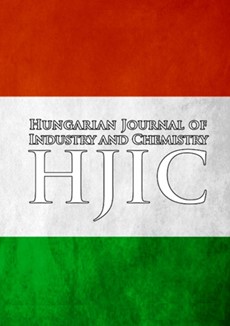Experimental Investigation into the Extraction of Nicotinic Acid Using Natural Non-Toxic and Conventional Solvents
DOI:
https://doi.org/10.33927/hjic-2025-02Keywords:
nicotinic acid, extraction, extraction efficiency, natural solvents, conventional solventsAbstract
Nicotinic acid and its derivatives are extensively used in the food, pharmaceutical and cosmetic industries. The technique for separating nicotinic acid from fermentation broth has a significant impact on overall production costs. The extraction of nicotinic acid was investigated using various kinds of natural non-toxic and conventional solvents such as sesame oil, rice bran oil, cyclohexane, 1-octanol and methyl isobutyl ketone (MIBK). The results were presented in terms of extraction efficiencies (E%) and distribution coefficients (KD). To determine these two parameters, experiments were conducted at 298 ± 1 K. The maximum extraction efficiencies of nicotinic acid were found to be 19.550, 16.514, 13.719, 17.526 and 6.216% using MIBK, 1-octanol, cyclohexane, rice bran oil and sesame oil, respectively. The differences in the extraction efficiencies of nicotinic acid using these solvents were explained in terms of dipole moment, dielectric constant and refractive index. Further attempts were made to correlate the extraction efficiencies with the other physicochemical properties of the solvents such as viscosity, density, molecular weight, etc.




